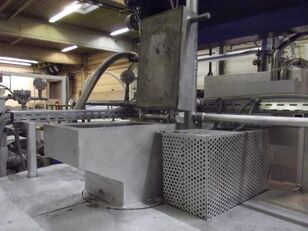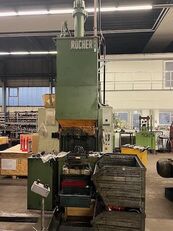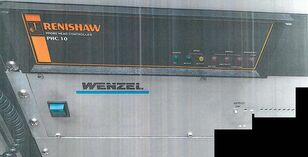Un'altra macchina per metallo Wire cleaning machine













Se avete deciso di comprare il mezzo ad un prezzo basso,bisogna assicurarsi che la persona con cui state comunicando è un venditore reale.Scopri tutte le informazioni possibili sul proprietario del mezzo. Uno dei metodi di truffa è quello di autonominarsi una azienda realmente esistente. In caso di dubbi, chiediamo gentilmente di contattarci per ulteriori controlli, tramite il modulo di feedback.
Prima di decidere di fare un acquisto, esaminate attentamente diverse offerte di vendita, per capire il costo medio del modello del mezzo scelto. Se il prezzo di offerta che Le piace è molto più basso rispetto alle offerte simili, pensateci. Una notevole differenza nel prezzo può indicare su difetti nascosti o sul tentativo del venditore di commettere una truffa.
Non comprare le merci, il prezzo di cui è troppo diverso dal prezzo medio di un mezzo simile.
Non acconsentire cauzioni dubbie e pagamenti anticipati della merce. In caso di dubbi, non abbiate paura di chiarire i dettagli, chiedete ulteriori foto e documenti del mezzo, controllate l'autenticità dei documenti, fate domande.
Il tipo più diffuso di truffa. I venditori disonesti possono richiedere una certa somma dell'acconto, per la «prenotazione» del diritto per l'acquisto del mezzo. In questo modo i truffatori possono raccogliere una grande somma del denaro e scomparire, e non farsi più sentire.
- Il trasferimento di pagamento anticipato sulla carta
- Non effettuare il pagamento anticipato senza la stipula dei documenti, che confermano il processo di devoluzione di denaro, se durante la comunicazione il venditore solleva dei dubbi.
- Trasferimento sul conto del "fiduciario"
- Una tale richiesta deve allertare, probabilmente state comunicando con un truffatore.
- Il trasferimento sul conto dell'azienda con un nome simile
- Attenzione, i truffatori possono mascherarsi come aziende famose, apportando piccole modifiche nel nome della società. Non fare i trasferimenti dei soldi, se il nome dell'azienda solleva dei dubbi.
- Sostituzione di propri dati in fattura dell'azienda reale
- Prima di fare il trasferimento del denaro, chiediamo gentilmente di accertarsi della correttezza delle credenziali, e se essi appartengono all'azienda indicata.
Dati di contatto del venditore


 Germania
Germania 






















































Marke: Wire cleaning machine
Wire cleaning machine (From a Plant for fire aluminizing steel wire)
Wire cleaning is carried out electrochemically
The system is subdivided as follows
Electrochemical pickling
structured as follows
Blow-off nozzle block
Cascade rinse I
Blow-off - nozzle block II
Cascade rinsing II
Blow-off and drying nozzle block III
Description of the pickling process
In the pickling treatment
each individual wire is pickled electrochemically in a 12-fold pickling register. The pickling register consists of 4 registers
which are connected in series
Each register channel contains a plus electrode made of titanium and a minus electrode made of stainless steel
The electrodes are U-shaped and the individual wire is passed through them without contact. Direct current is conducted through the electrodes
the positively charged current is transferred from the plus electrode to the minus electrode via the wire
The channels of the individual registers are completely flooded with the pickling medium as a cascade by 2 pumps
The gas bubbles that develop on the wire cause the wire to be cleaned. The channels of the individual registers are completely flooded with the pickling medium as a cascade by 2 pumps
The pickling medium can be either phosphoric or sulphuric acid or a mixture of both
The concentration depends on the surface condition of the wire
primarily stearates (drawing agent residues) should be removed
Certain acid concentrations should not be exceeded
see the system manufacturer's instructions
The pickling unit is heated to increase cleaning and pickling performance
max. 70°C is possible. The optimum temperature depends on the condition of the wire surface
The direct current at each individual wire channel can be regulated separately
a maximum of 250 A is possible. The direct current is converted via 12 dry rectifiers
The current intensity must be set according to the condition and contamination of the wires. The procedure is described in Chapter II
B.03 Electrochemical wire cleaning
The pickling medium is permanently skimmed off by 2 piston diaphragm pumps in order to filter out the filth
dirt and stearates via a belt filter. The cleaned medium flows back into the pickling tank
Pickling residues carried along by the wire are blown off in nozzle block I
The wire is then pre-rinsed in the cascade rinse - pointed rinse to rinse off any pickling residues carried along
The rinsing water is refreshed by the water overflow from rinsing stage II
The fill level in rinsing stage II is monitored and automatically topped up
The wire is rinsed in cascade rinse II
The wire is blown dry after cascade rinse II
Cascade sinks I and II are fed via 2 separate sinks. The baths are heated to improve the rinsing performance. The maximum rinsing bath temperature is 60°C
To avoid waste water
the water is replenished via sink II
sink I is fed from the overflow of sink II
The conductivity value (salt content) of sink II is measured continuously
an alarm is triggered if the conductivity value is exceeded. The conductivity value can be preset on the conductivity meter
The media levels are monitored in the system
The tanks are filled via an electro-pneumatic directional control valve
If the level falls below minimum level I: the heating is switched off
If the level falls below minimum level II: the pumps are switched off
Ultrasonic wire rinsing device
The electrochemically cleaned wire is cleaned in the ultrasonic rinsing device
The wires pass through a sonication tank which is permanently flooded from a storage tank
The overflow from the sonication tank flows back into the supply tank
The cleaning medium in the ultrasonic tank is heated to 80°C
The ultrasound creates cavitation on the wire surface and thus supports the post-cleaning process
The post-cleaned wire is then blown dry by air nozzles before being heated in the inductive wire heating system
Find more here
mostrare i contatti
Contact us at
mostrare i contatti